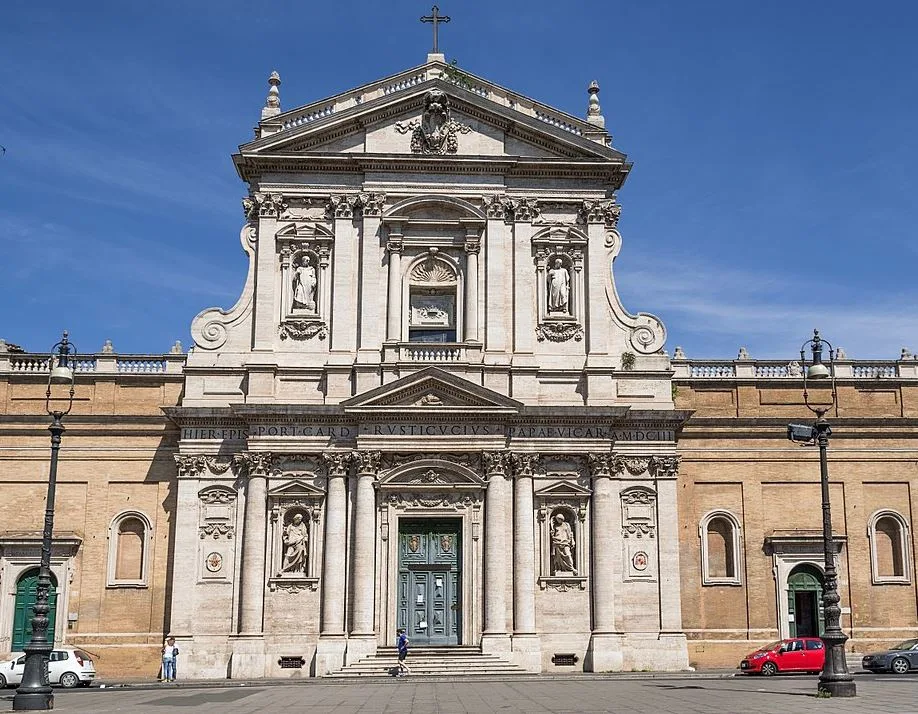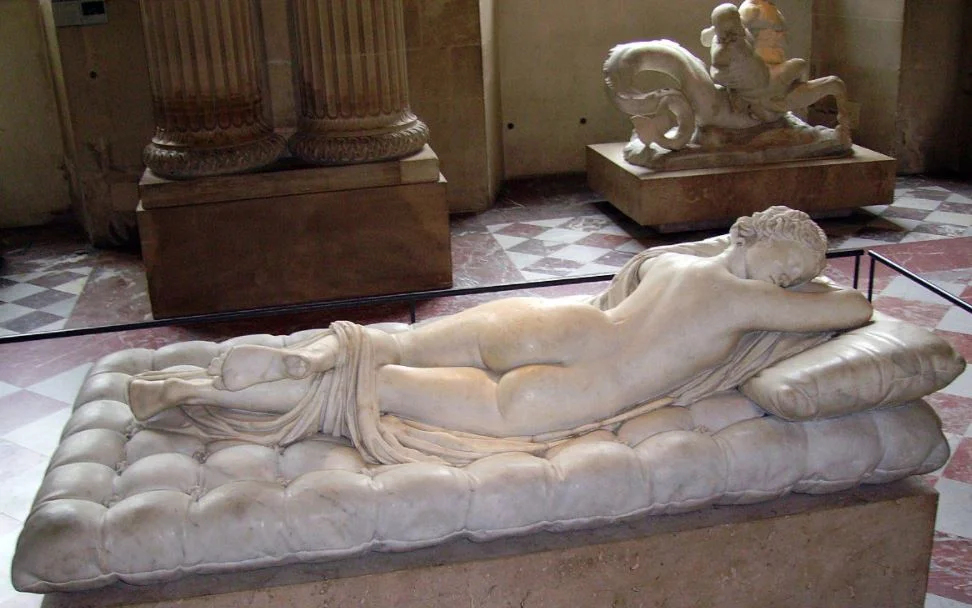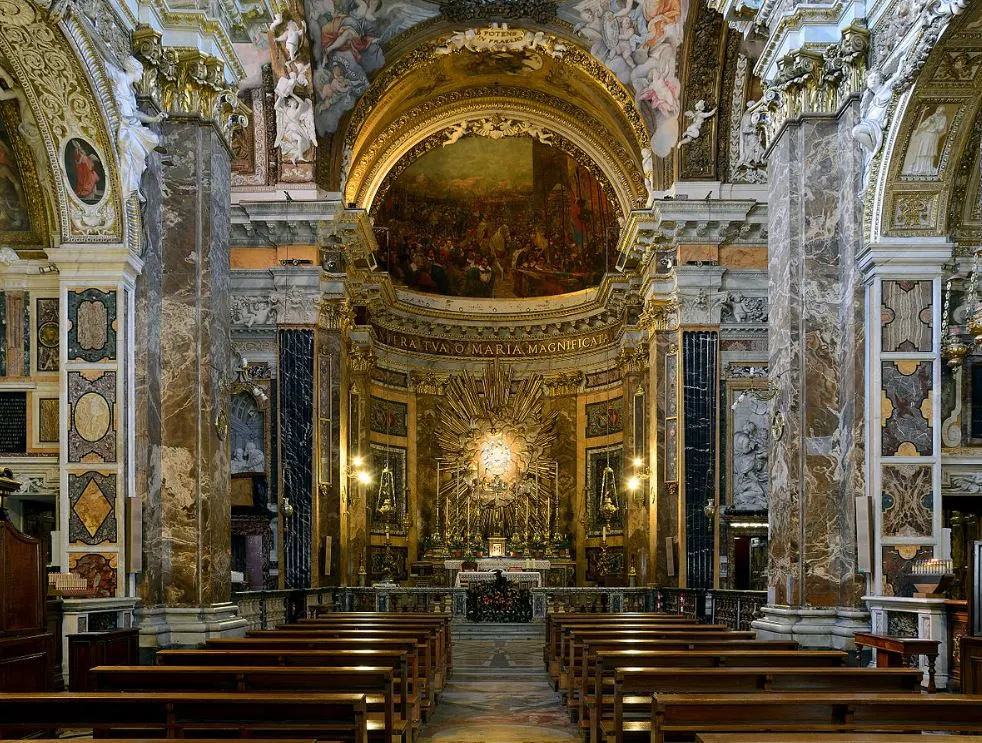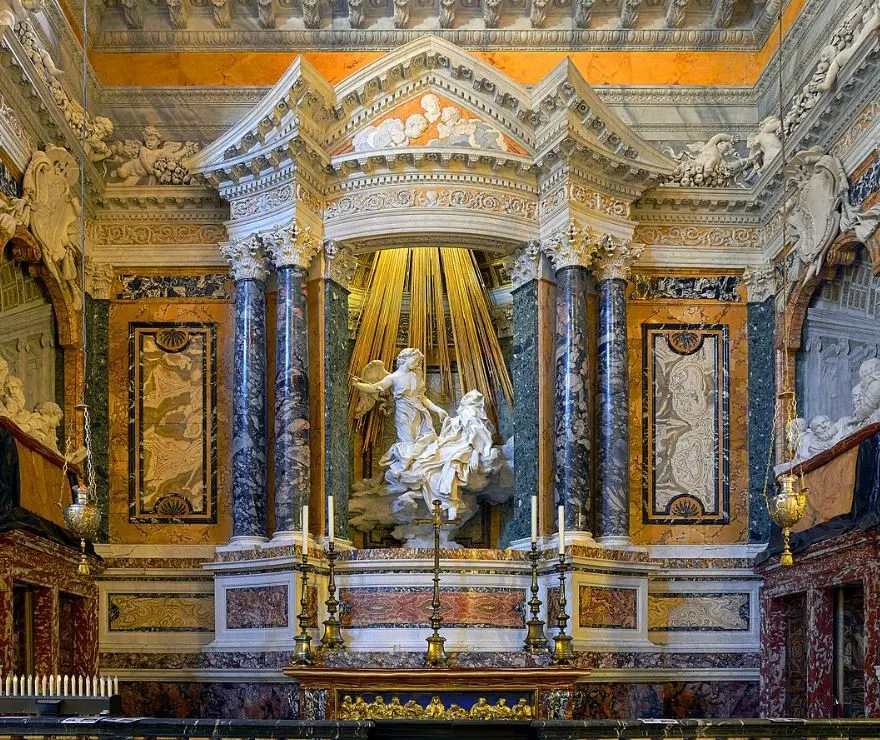The exterior of this church in Rome already looks as if there’s something special to be found inside, and that’s definitely the case.
Santa Maria della Vittoria is a Catholic church and basilica constructed during the Baroque era and houses one of the most stunning frescoes and sculptures in the city.
There’s also a remarkable backstory about this famous church related to when people were digging for its foundations.
In this article, you’ll discover some of the most interesting facts about this amazing landmark in Rome so you can learn all about it.
1. Santa Maria della Vittoria is located next to a fountain in the northern part of Rome
There’s no shortage of amazing churches in Rome, that’s for sure. Apart from the façade, this rather small church doesn’t look that impressive as well.
Santa Maria della Vittoria, however, is pretty much a must-visit building when you’re in Rome because of the incredible interior and artwork inside.
It’s located in the Rione Sallustiano, not too far northwest of the Baths of Diocletian and the marvelous Piazza della Repubblica.
The church borders the Piazza di San Bernardo on its northern tip and is located right across from the Fontana dell’Acqua Felice, a monumental fountain in Rome that is also known as the Fountain of Moses.
Yes, this place is filled to the brim with fascinating landmarks, but then again, this is pretty normal in Rome.

2. It was constructed at the height of the Baroque era in the 17th century

This section of Rome was once the location of the ancient Gardens of Sallust, a pleasure garden that was developed by a Roman historian named Sallust in the 1st century B.C.
These fell into ruin after the Fall of the Roman Empire and the place where the church was constructed was still unoccupied in the early 17th century.
This piece of land was acquired in 1607 by the Discalced Carmelites as they planned to build a chapel dedicated to saint Paul in this location.

The church was constructed between 1608 and 1620 and it had a rather simple design with a single nave adjoined on both sides by several chapels.
The Baroque building was designed by Carlo Maderno but the façade of the building was designed by Giovanni Battista Soria and constructed between 1624 and 1626.

3. It was dedicated to the Virgin Mary after an important victory of the Catholic army
The church was initially dedicated to Saint Paul but this was changed to the Virgin Mary for a particular reason in 1620.
This was the year of the Battle of White Mountain, a battle fought between the Bohemian Federation and the Catholic forces of the Holy Roman Empire on November 8, 1620.
The Bohemians were defeated and this abruptly ended the Reformation in Bohemia. This was an important victory because it ensure Habsburg control in this part of central Europe for the next 3 centuries.
The name of the church, Santa Maria della Vittoria or Saint Mary of Victory, was a reference to the belief that the Virgin Mary helped Catholic forces to beat the Bohemians.

4. The building’s design was based on that of another church right across the street
When you walk around the picturesque Piazza di San Bernardo, you’ll notice another building that looks strikingly similar to Santa Maria della Vittoria.
This church faces the square directly and is called the “Church of Saint Susanna at the Baths of Diocletian” or simply “Santa Susanna.”
Unlike the location of the church dedicated to the Virgin Mary, there was already a church in this location since the year 280 A.D.
The current church was completely rebuilt between 1585 and 1603 by Carlo Maderno. As you can see, the façade of both buildings looks strikingly similar.
This means that architect Giovanni Battista Soria was surely influenced by Maderno’s design of the nearby church.

5. A famous ancient sculpture was discovered during the excavation works
The workers who were digging to build the foundations of the church in the early 17th century made a remarkable discovery.
They unearthed an intact ancient sculpture known today as the “Sleeping Hermaphroditus.” It wasn’t long before the word reached Scipione Borghese and he quickly confiscated the work.
Borghese was the nephew of Pope Paul V and an avid art collector. He promised to fund the façade of the church in return for the sculpture, a word he only kept in the early 1620s.
Today, this work, which features a mattress sculpted by Bernini, is one of the most famous sculptures at the Louvre in Paris.

6. The interior decoration of the church is nothing short of breathtaking
Even though the façade is a prime example of Baroque architecture in Rome, the main reason why you should visit this church is because of its incredible interior.
It’s a relatively small space with a length of 35 meters (115 feet) and a width of 19 meters (62 feet) that features a single nave with 3 interconnected chapels on both sides. The aisles are supported by massive Corinthian columns.
Just about every spot of the church’s interior is decorated with marble and white and gold stucco reliefs in the typical dramatic Baroque style.

7. The incredible fresco on the ceiling was completed in 1675
You simply have to look up when you enter this church because the entire ceiling is decorated with monumental fresco.
This amazing work of art was completed in 1675 by Giovanni Domenico Cerrini (1609-1681), a Baroque painter from Bologna. This dual work is titled “The Virgin Mary Triumphing over Heresy” and “Fall of the Rebel Angels.”

This fresco leads to a dome that is equally impressive as it’s decorated with frescoes and the stucco putti that can be found in full relief all across the ceiling.

8. One of the chapels is home to one of Bernini’s ultimate masterpieces
If all of this wasn’t enough, then just wait until you enter the Coranro Chapel, a chapel commissioned by the Venetian Cardinal Federico Cornaro (1579–1653).
It’s here that you can find one of Bernini’s ultimate masterpieces titled “The Ecstasy of Saint Teresa” (1647-1652), a sculpture that embodies the Baroque style of sculpture that Bernini developed.
Bernini also designed the chapel in such a way that natural light highlights the sculpture.
To top it off, he also sculpted the audience on both sides which consists of sculptures depicting members of the Cornaro family.

